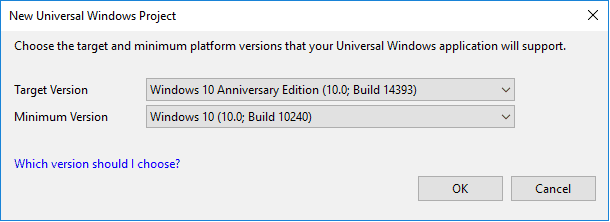Microsoft provides some details on how to develop apps for the Windows 10 Anniversary Update SDK
3 min. read
Published on
Read our disclosure page to find out how can you help Windows Report sustain the editorial team Read more

As the Windows 10 Anniversary Update makes it way to consumers over the next few days, the Windows team appears to be forgoing a brief celebratory lap of their accomplishments to instead champion more developer participation with this OS release.
Today, both the Visual Studio and Windows Hardware Certification teams have announced new building and submission tutorials for developers interested in the Windows 10 platform. While the overall process of building and deploying a Universal Windows Platform app remains relatively unchanged from what has been announced during Build 2016, there are some additional features and processes the Windows team would like developers to consider for the platform.
Starting with building Universal Windows apps targeting the Windows 10 Anniversary SDK in specific, developers should be aware that the Visual Studio team has released new development tools to VS 2015 Update 3. The new tools, now enable developers to target Windows 10 AU SDK (build 14393) specifically, which in turn allows them to leverage all the added goodies that have been bundled in the update.
Developers targeting Windows 10 AU can now make use of the 2,700 plus enhancements to the Windows 10 Anniversary Update such as Cortana additions, Windows 10 Inking and pen support, Edge improvements and cross-platform development between desktops, phones, Xbox One and HoloLens.

After developers have gone through the process of creating or updating Windows apps using .NET for better Windows 10 AU SDK integration, improved Windows Store integration, possibly deploying larger games to the Xbox, debugging an application through new XAML UI’s and designing support for indirect resources, comes to the new submission process.
Thankfully, the Windows hardware and certification teams have updated their submission process to include versions 1607 of Windows 10 and Windows Server 2016.
As of today, the Windows Hardware Lab Kit (HLK) has been updated to support the two new SKU’s as well as providing improvements to HLK that include exporting failed HLK jobs, improved ability to diagnose failed HLK test and adding playlist support for incremental Windows releases.
The Windows hardware certification team also refined its compatibility policy of Windows 10 to include version 1507/ Windows 10, version 1511 drivers Factory-Installing on Windows 10 and version 1607 images.
For the first 90 days after the release of Windows 10, version 1607, OEMs looking to achieve Compatibility for systems shipping Windows 10, version 1607 may factory-install drivers for components that achieved Compatibility with Windows 10, version 1511. After 90 days, OEMs looking to achieve Compatibility for systems shipping Windows 10, version 1607 can factory-install only drivers for components that achieved Compatibility with Windows 10, version 1607. This is not applicable to OEMs certifying for Windows Server 2016, as all components within the system must be certified for Windows Server 2016 to be considered compatible.
All of this news comes just hours after Microsoft pulls the trigger on its largest update this year for Windows 10. There is little doubt that while Microsoft is focused on transitioning to the cloud, it has its eyes leveled at the men and women who make the current Windows community a vibrant and worthwhile endeavor. Hopefully, these refinements and updates speak to some of the troubles some developers have had transitioning their older apps, programs, and services over to the Universal Windows Platform.








